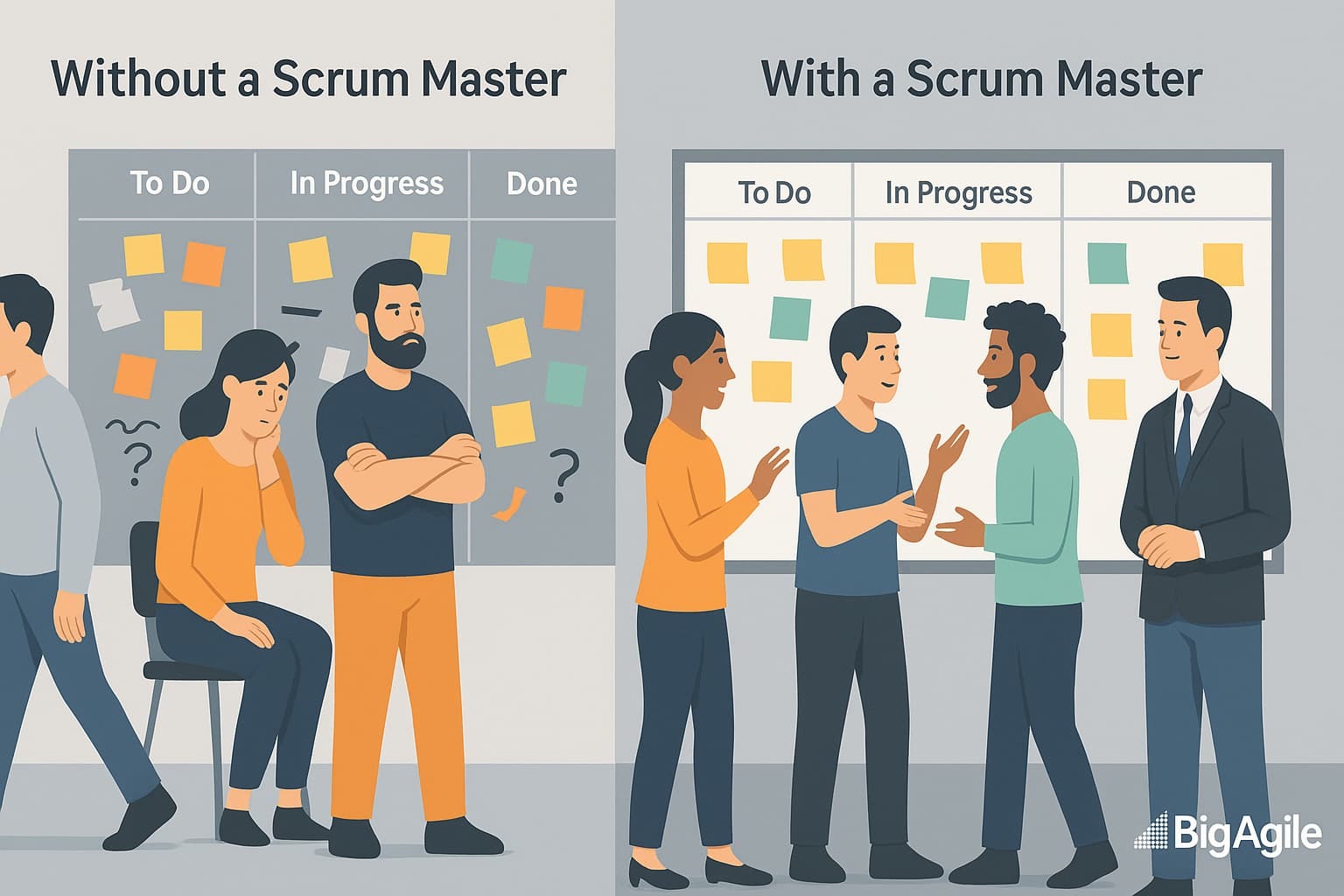
Not long ago, a team I worked with decided they no longer needed their Scrum Master. “We know Scrum,” they said. “We’ll save time if we just do it ourselves.” Yeah! Maybe we have moved past team-level agility, and I can move on to organizational-level agility.
Everything looked fine. Sprint Planning happened, Daily Scrums were quick, and stories kept moving across the board. But by the third sprint, cracks appeared. Priorities shifted mid-sprint, work piled up unfinished, and developers began quietly skipping the Daily Scrum because it “wasn’t useful anymore.”
By the time leadership asked why velocity had dropped, the team had quietly drifted into chaos. The absence of the Scrum Master didn’t just remove a role; it removed the invisible guardrails that had been holding the system together.
What.
The Scrum Master role is often misunderstood. It’s not about enforcing rituals or acting as a project manager in disguise. Instead, the Scrum Master is an enabler of agility; a servant-leader whose job is to create the conditions for the team to self-manage effectively.
That includes ensuring psychological safety, protecting enabling constraints like the Sprint Goal or Definition of Done, and coaching the team to inspect and adapt continually.
Far from being “process police,” Scrum Masters help teams internalize Scrum’s principles so they can eventually run smoothly without constant external direction. They’re not enforcing; they’re enabling.
So What.
Why is this important? Because when the role is undervalued or eliminated, teams lose a crucial safeguard against dysfunction. Without psychological safety, developers remain silent about risks or misalignments.
Without someone maintaining focus, the work-in-progress grows, and the Sprint Goal becomes an afterthought.
Without coaching, Scrum turns into a mechanical checklist that frustrates instead of empowering.
The confusion stems from visibility: Scrum Masters don’t write code or ship features, so their contributions are easy to overlook. The real value often appears in what doesn’t happen, the conflicts avoided, the waste minimized, and the mistakes caught early enough to learn from them.
Now What.
Leaders and teams should rethink their expectations of the Scrum Master. Instead of asking, “What are they doing all day?” a better question is, “What would we lose without them?” The answer is often focus, flow, and safety.
Practical steps:
- Observe where the team hesitates to speak up: the Scrum Master should coach through that silence.
- Watch for creeping scope or constant interruptions: the Scrum Master protects focus.
- Reflect on whether retrospectives lead to real change: the Scrum Master ensures learning cycles are acted upon.
When these responsibilities are visible, it’s easier to see that the Scrum Master is not a facilitator for ceremony, but a catalyst for continuous improvement.
Let's Do This!
Scrum Masters still matter because agility isn’t just about speed; it’s about learning, adapting, and sustaining delivery in a complex world.
Their impact may be subtle, but it’s foundational. Remove them, and chaos creeps in. Empower them, and teams not only deliver more predictably but also grow in resilience and self-sufficiency.
Scrum Masters don’t amplify rituals; they amplify agility.
Join us in one of our next online workshops; fun, engaging, and could change your career trajectory.